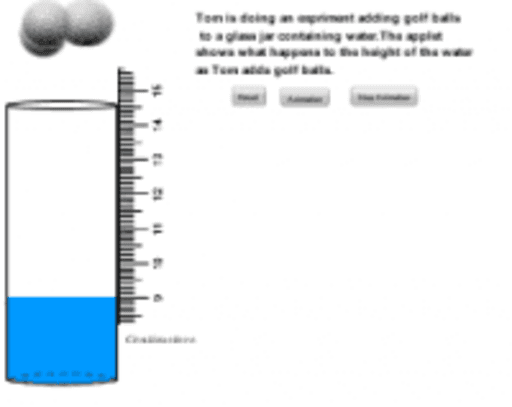
The new descriptions of strength, linearity and direction. Given a new set of scatterplots below, repeat the same exercise, but now with Portland, OR) there is a strong, linear trend. Though there are a few outliers (citiesĪlong the northwest coast of the US that have temperate winters, such as However, the underlying cause for both of. Negative direction, as the greater the latitude, the colder the When we plot that using a scatter graph, assuming linkage, both show a linear and positive movement on the graph. Scatter plots are described as linear orįor example, the scatterplot of latitude and January temperatures had The linearity of scatter plot indicates how close the points are If the points are clearly clustered, or closelyįollow a curve or line, the relationship is described as strong. 14 shows a plot of simulated experimental data. 14 Example of a linear relationship y 6 x + 55, R2 0.56, P <0.001. The more spread out the points are, the weaker A regression analysis can provide three forms of descriptive information about the data included in the analysis: the equation of the best fit line, an R2 value, and a P -value. The strength of a scatter plot is usually described as weak, Increases, or the points of the scatterplot go down from left to The explained variable decreases as the explanatory variable Increases as the explanatory variable increases, or the points of the The direction is positive when the explained variable The direction of a scatter plot can be described as positive or When describing the shape of the scatter plot and the relationshipīetween the explanatory and explained variable, there are three important This exercise would be simpler given uniform adjectives that everyone could
#Linear scatter plot drivers#
Similarly, drivers with less driving experience are considered riskier and pay greater premiums. Ĭorrect: Drivers with more driving experience are considered safer, so they pay smaller premiums.(y) is the insurance premium paid for a sample of drivers. Search our site (or the Web or your favorite software) for more about this.Q-6: The explanatory variable (x) is the years of driving experience and the explained variable It is significant (t = -33.57 with 29,998 df the p-value is essentially zero).Īn even better exploratory technique is to fit a flexible robust regression curve to the data (using a GAM or, perhaps, Loess). So the slope of the line is 10/8 percent per year which is 5/4 per year or about 1.25 per year. To calculate the slope, (55-45) is the amount the vertical height changed and the length of time in years was 9 - 1 8 years. On this plot I have superimposed the least squares fit in red. The y- coordinates were 45 and 55 and those are in percent, remember. Additionally, I have drawn the points with a high degree of transparency (alpha is just 1/16) to help show where most of the points are: Here, by shifting the horizontal positions (by up to 1/4) in each direction we retain all information about the discrete x coordinate: see the horizontal axis label in the next plot for the formula in R. If the points are coded (color/shape/size), one additional variable can be displayed. This means to randomly and independently shift their positions just a little. A scatter plot (also called a scatterplot, scatter graph, scatter chart, scattergram, or scatter diagram) 3 is a type of plot or mathematical diagram using Cartesian coordinates to display values for typically two variables for a set of data. Scatter Plots require 2 sets of data, the first set of data is. The Scatter Plot is a mathematical diagram that plots pairs of data on an X-Y graph in order to reveal the relationship between the data sets. Many techniques are available, ranging from 2D density plots to binned plots to sunflower plots, but a quick and simple one is to jitter the points. The Scatter Plot is one of the seven QC Tools that you, the Quality Engineer, must know and be able to use when analyzing your data. Use a visualization that resolves the overlaps. If anything, these 30,000 points look like they might be trending positively (sloped upwards a little from left to right). It, too, presents little visual evidence of any linear relation: Here is a dataset whose scatterplot looks like yours. The plot function will be faster for scatterplots where markers dont vary in size or color.

You cannot conclude much because the overlapping points may obscure trends.


 0 kommentar(er)
0 kommentar(er)
